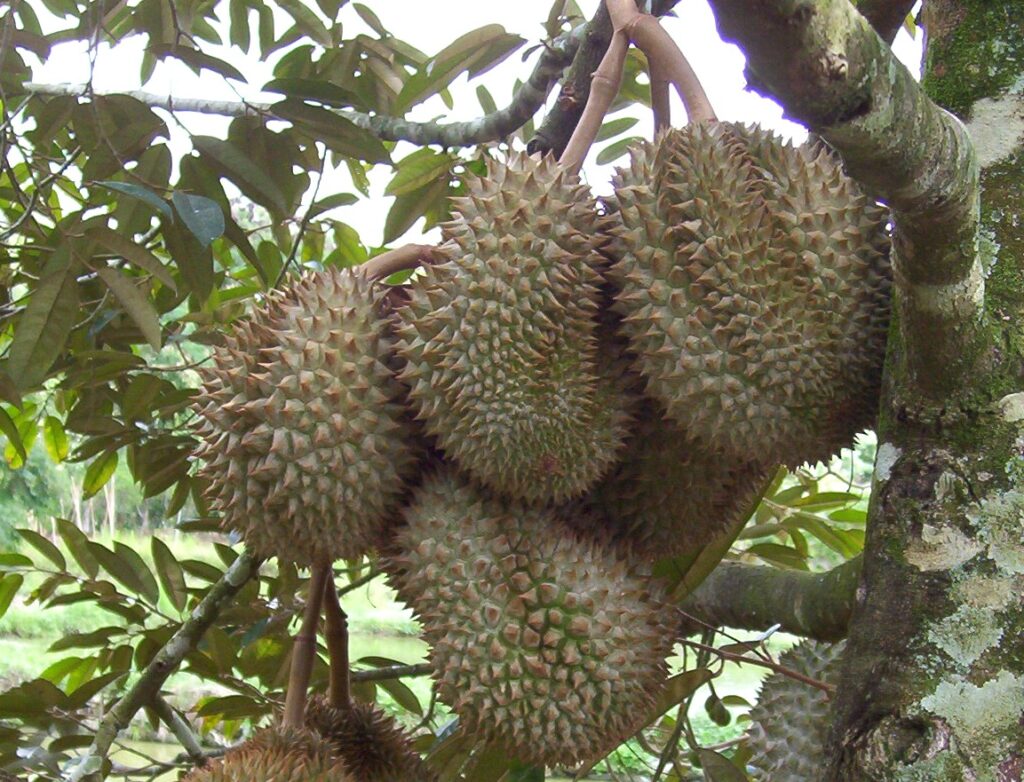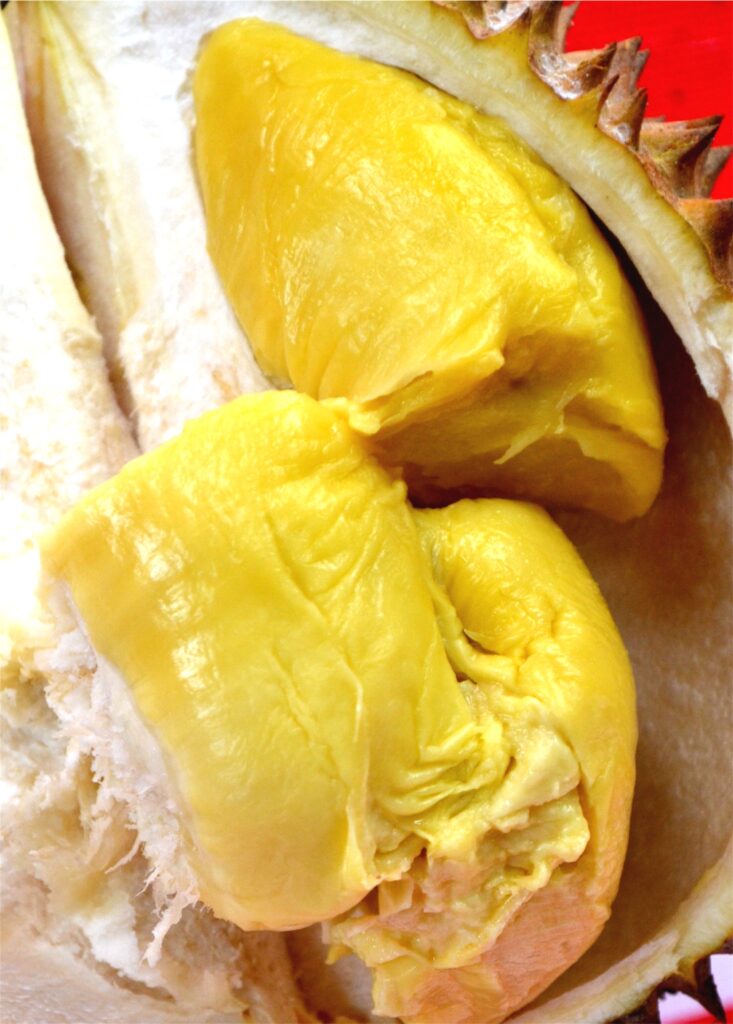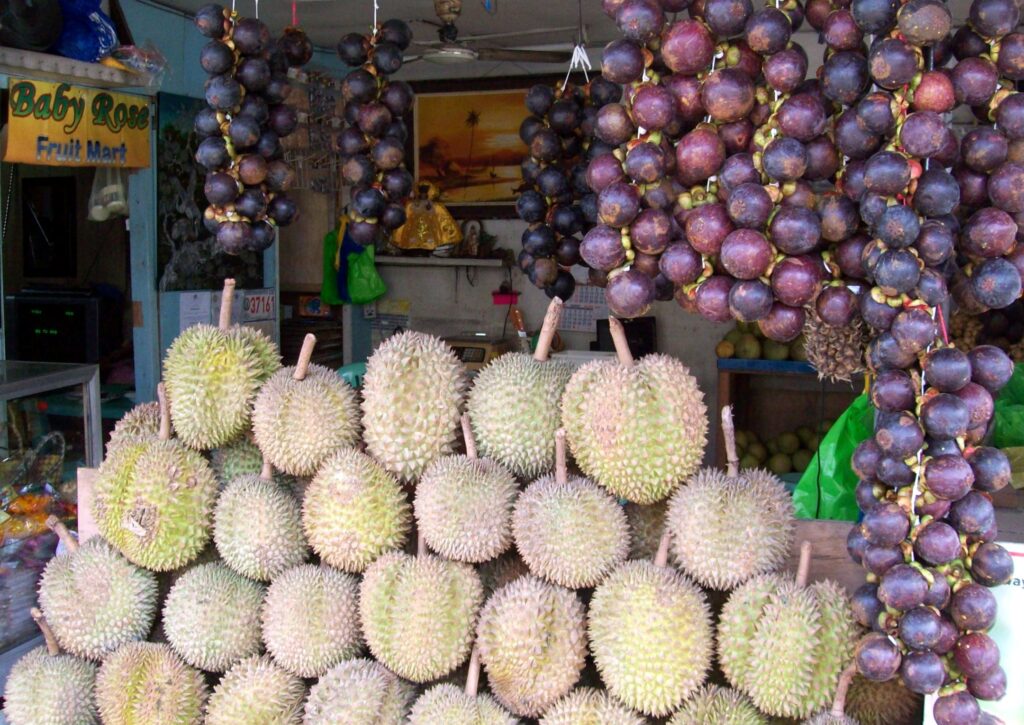Text and Photos by Henrylito D. Tacio
Make way for the most exotic – if not controversial! – fruit found in this part of the country: durian (known in the science world as Durio zibethinus).
“Durian has an excellent taste that its flavor surpasses all the other fruits in the world,” old traveler Linchott, writing in 1599, commented. Dr. Paladanus, a world-renowned historian, added: “This fruit is of a hot and humid nature. It smells like rotten onion, but once tasted, everybody will like it.”
To which British naturalist Alfred Russell Wallace agreed. After a visit with the Interior of Borneo in 1855, he observed the offensive smell of durian in the house, and some persons did not even attempt to taste it. “This was also my own experience when I first tried to taste it in Malacca; but in Borneo, I found a ripe fruit on the ground, and eating it out-of-doors, I became a confirmed durian eater.”
In recent years, there is an increasing demand for durian in the export market. It is called “exotic tropical fruit” in North America and Europe, where customers offer premium prices.
The durian tree belongs to the family Bombacaceae. In his book, Underexploited Tropical Plants with Promising Economic Value, Dr. Roberto E. Coronel notes: “The durian was probably introduced into the Philippines during its early trading with neighboring countries. Up to now, it still grows wild in many places in Mindanao and is particularly abundant from Davao to the lake region of Agusan and the Sulu Archipelago.”
The durian tree is medium to large and grows as tall as 40 meters. Grafted orchard trees, however, seldom reach a height of more than 12 meters. Trees grown from seedlings start blooming in the seventh year. Flowering in grafted trees begins in the fourth year or sooner if the trees are growing vigorously.
Durian is abundant from June to October. The durian fruit weighs from 1.5 to 2.5 kilograms. Some may weigh as much as 7-8 kilograms. The color is normally a dull olive green but varies from a light rusty tone to light yellowish green.

Durian is propagated by seeds and can also be grown using vegetative parts. The seed is notoriously short-lived and is affected by high temperature. Brief exposure to direct sunlight will damage the seed. The seed loses viability in about a week, even if stored in a cool place.
Dr. Pablito Pamplona, author of Technoguide for the Commercial Production of Durian, discourages planting durian using seeds since they do not grow true-to-type. Instead, he recommends vegetative parts through grafting and budding—mortality of 50-percent or higher results when normal-size planting materials (NPM) are used in planting. However, high mortality during orchard establishment can be overcome by using large-size planting materials (LPM) with a stem diameter of three centimeters or bigger and grown for two to three years in the nursery.
NPM is 0.6-0.8 meters tall at planting, while LPM is 1.25-1.75 meters tall. Farmers who lack the capital to buy LPM can buy NPM instead. But the plants should be repotted first in big plastic bags for them to grow to LPM.
One advantage of LPM is the reduction of the immaturity period – from six years to less than four years, making the gestation period shorter.
Based on a study, a 2.5-year-old LPM gives 90% survival and attains flowering stage in 3.8 years. In the fourth year, it can produce an average of 7.5 fruits, 26 fruits in the fifth year, and 40 fruits in the sixth year.
NPM, on the other hand, gives only 50% survival or even below. It attains the flowering stage 6.6 years after planting. The number of fruits during the sixth year is 6.5; the seventh year, 21.5l; and the eighth year, 43.
The durian is planted in humid lowland areas below an elevation of 800 meters. It does not thrive in areas with a distinct dry season. Durian seedlings should be transplanted in rich, deep, well-drained soil.
Dr. Pamplona recommends harvesting done by climbing the tree and detaching the fruits carefully from the peduncle. The fruits are then placed in the basket and lowered carefully. Fruits dropped to the ground are easily damaged.

Durian ready for eating 
Exotic fruits
Durian fruit is a good source of carbohydrates, fats, vitamins, and some protein. The ripe pulp is usually eaten fresh by most people. The pulp can also be made into jam, preserve (often packed like long sausages), candies, and other sweets, or used as ice cream flavoring. On the other hand, the unripe or half-ripe pulp may be used in making soup.
Unknown to many, the seeds of durian are roasted, cut into slices, and fried in spiced coconut oil to be eaten with rice or covered with sugar and consumed as a sweetmeat in Indonesia.

